“I am not a failure,” is what I would have told you six months ago. Today, I will proudly announce to you that I am a failure. But before you jump to any conclusions about my statement, let me explain myself.
It was my brother’s birthday and he begged me to attend the Hive’s “Introduction to Design Thinking” event. “What the heck is that?” I remember thinking to myself. As I entered the Hive for the first time, I became enthralled by the neon sticky notes and vibrant posters that encased the building. The classrooms, too, fascinated me. There were wheels attached to all the brightly colored tables and stools, sketches covering the walls, and most impressively, an abundance of Sharpie markers. At the event, I was introduced to human-centered design and fell in love with its innovative processes. That night, I wished my brother a happy birthday and thanked him.
Three months later, I am enrolled in the Hive’s human-centered design course. Through a series of workshops and design projects, I have learned to utilize innovation, collaboration, and experimental learning to tackle complex problems. Additionally, I have learned to celebrate failure as it is an essential part of the design process. Most importantly, through my experiences with The Hive, I have learned that every problem is solvable. Upon my many returns to the Hive, I have grown to see the value of each sticky note and ultimately each person behind its short, anonymous messages. Through my experiences at the Hive, I have discovered that design thinking creates more than just collaboration, but a community.
…………………………………………………………………………………………………………………………………………
‘The Hive’ is…
A place and a set of mindsets for students from all five of the Claremont Colleges to come to learn to be more creative, learn to gain confidence in their creativity that they already have, learn to sharpen those creative skills, and to learn how to collaborate. Students ultimately learn how to be creative in team environments as working in groups helps us learn that often the best ideas come from teams.
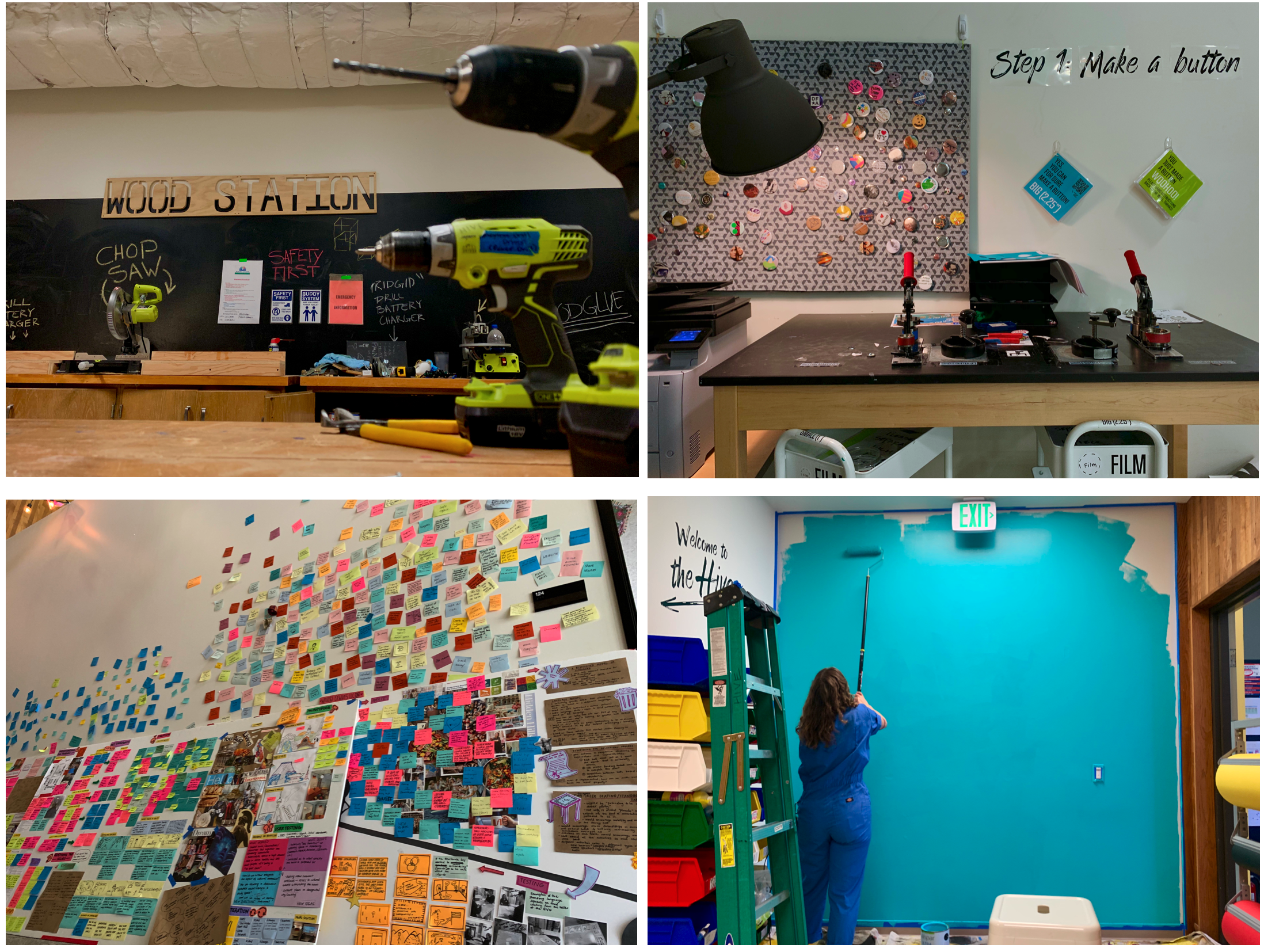 Rick and Susan Sontag Center for Collaborative Creativity (The Hive)
Rick and Susan Sontag Center for Collaborative Creativity (The Hive)
“The Hive attracts students that have an appetite to sharpen their creative skills and make and try things.” –Fred Leichter, Director of the Hive
Students from all five colleges and different majors come to experiment, build, and meet new people. At the Hive, you’ll find button makers, rolls of colored paper, paint, glue, wood, pipe cleaners, cardboard, scissors, and much more!
What is Human-Centered Design?
 Human-Centered Design Process, Courtesy of Stanford Center on Longevity
Human-Centered Design Process, Courtesy of Stanford Center on Longevity
The backbone of the Hive is Human-centered design (design thinking). Human-centered design is a creative approach to problem-solving with an emphasis on empathy. It begins with finding the unmet needs of the users you are designing for and ends with a solution for that individual. This process includes generating tons of (extreme) ideas, rapid prototyping, testing and sharing your innovative solutions!
What Can You Do at The Hive
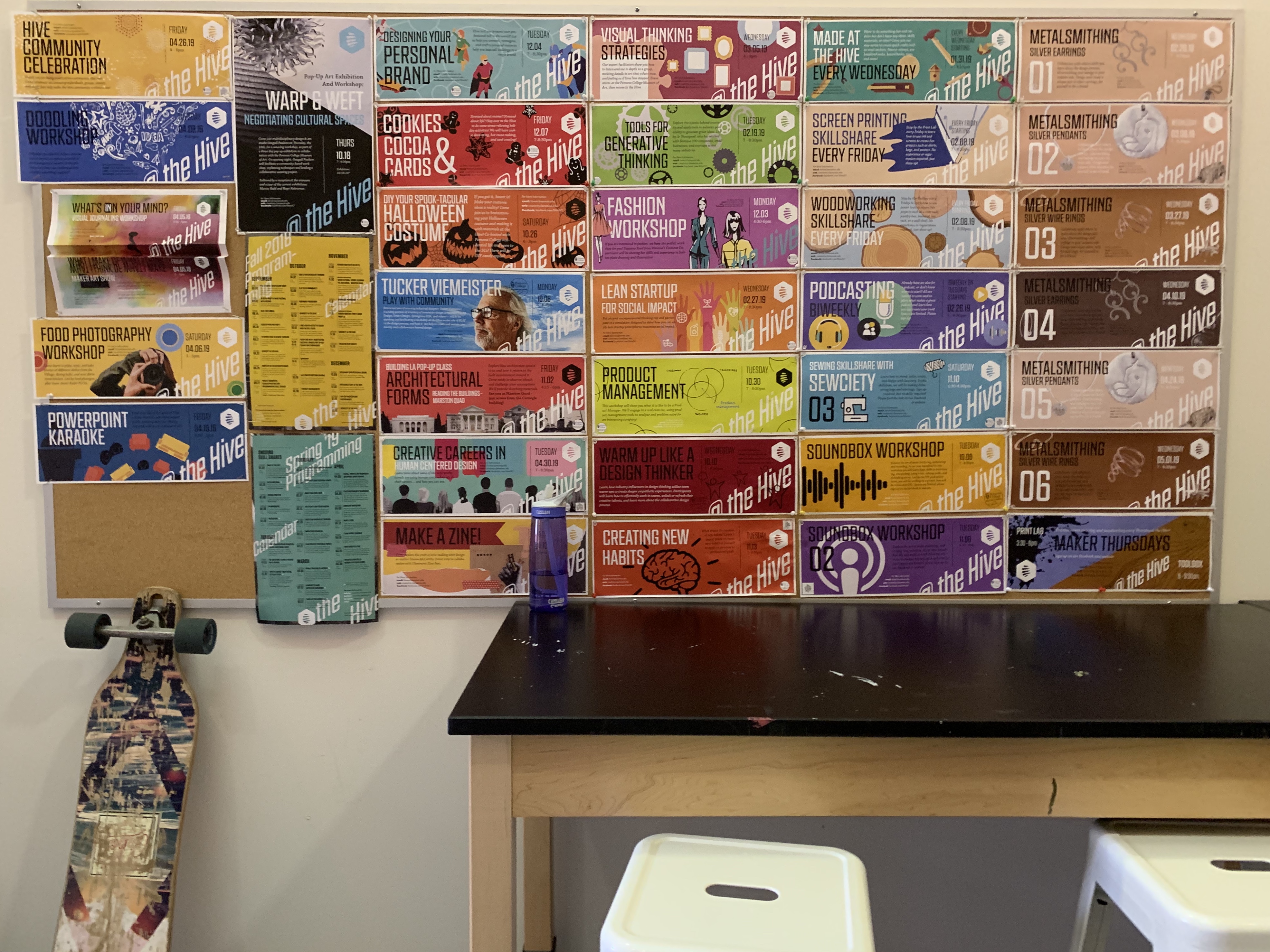 Rick and Susan Sontag Center for Collaborative Creativity (The Hive), 2018-2019 Skillshares and Workshops
Rick and Susan Sontag Center for Collaborative Creativity (The Hive), 2018-2019 Skillshares and Workshops
“It is a place to experiment and play and where failure is just fine”–Fred Leichter, Director of the Hive
Skillshares
The Hive offers Skillshares for students, faculty, and staff. Skillshares are mini-workshops for more complicated and dangerous activities, such as woodworking and screenprinting. Students often come to prototype, bring their ideas to life, or just to experiment.
Workshops
The Hive also offers non-credited Workshops that are oriented around personal skills. Workshops are evening events are lead by guest speakers and/or Hive Staff. Some of this year’s most popular workshops include:
- 36 Questions to Make Friends With Anyone
- Empathetic Listening
- Introduction to Product Management
- Design Your Personal Brand
- Creating New Habits
- Halloween Costume Making Workshop
- 3 Steps to Improving Your Future
- Powerpoint Karaoke: Improve Your Presenter Skills
For Credit Classes
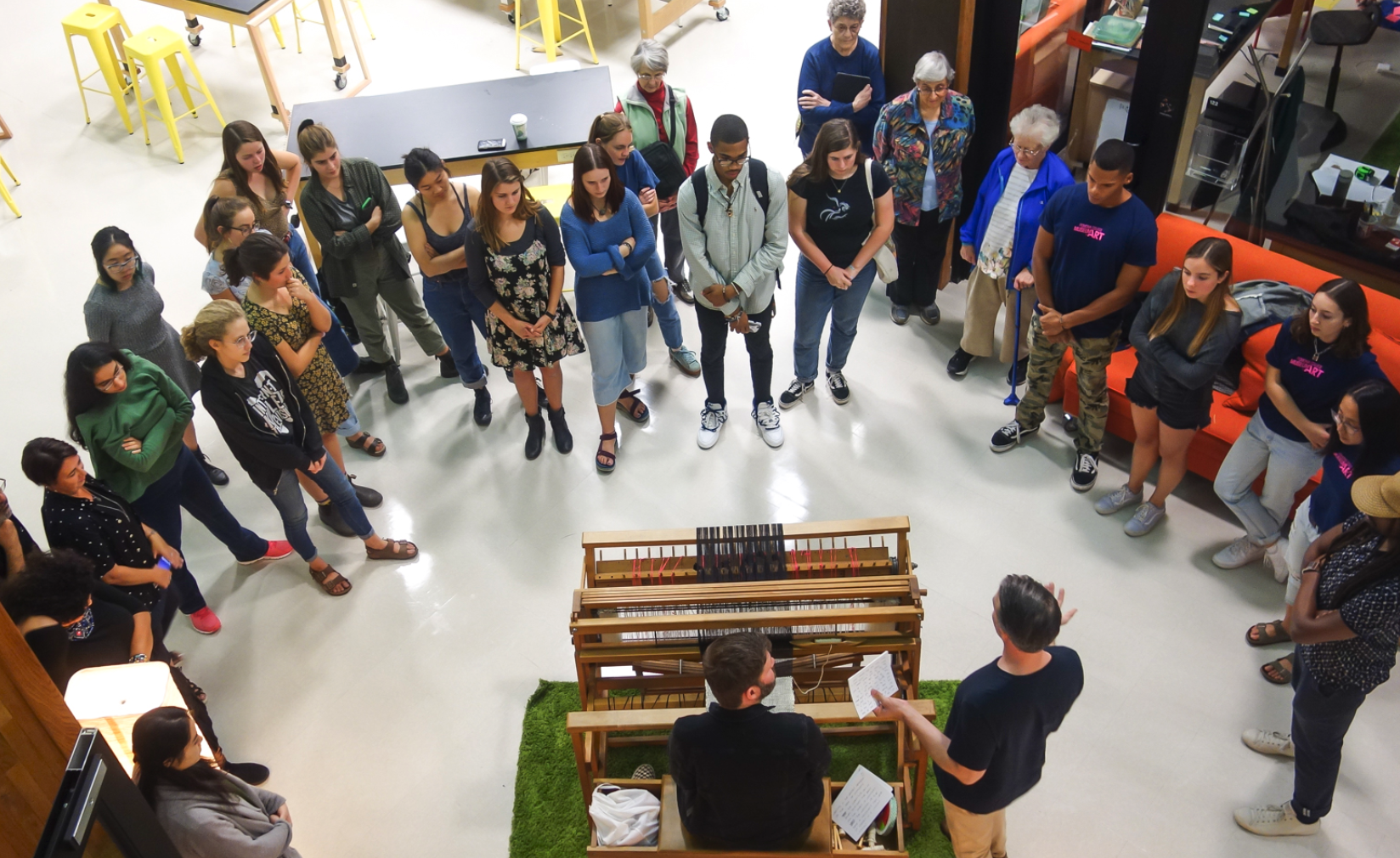 Courtesy of The Hive
Courtesy of The Hive
The Hive offers a one-credit course for students who want a deeper understanding of design thinking. Introduction to Human-Centered Design (ENGR180HMC) is offered during the spring and fall and uses human-centered design as its underlying methodology. The course will include fundamental readings in design thinking, interactive design methods and processes, and hands-on projects. Students will learn how user research, synthesis, idea generation, and prototyping can be integrated into different phases of the design process. Although the course does not require technical knowledge, it is incredibly valuable for engineers and students studying psychology, English, economics, or philosophy, biology…the list goes on!
“It’s about tackling big ambiguous problems” — Fred Leichter, Director of the Hive
Hive Director, Fred Leichter is always on the look for challenges where designers are needed both on and off campus. This spring 2019 semester, Fred’s students helped contribute to the redesigning of Pomona’s Center for Modern Languages and International Relations, Oldenborg. Hive students have also tackled natural disaster response and recovery challenges as well as enhancing the organ donation experience, Claremont Consortium Library, and Hickson Center for Sustainability.
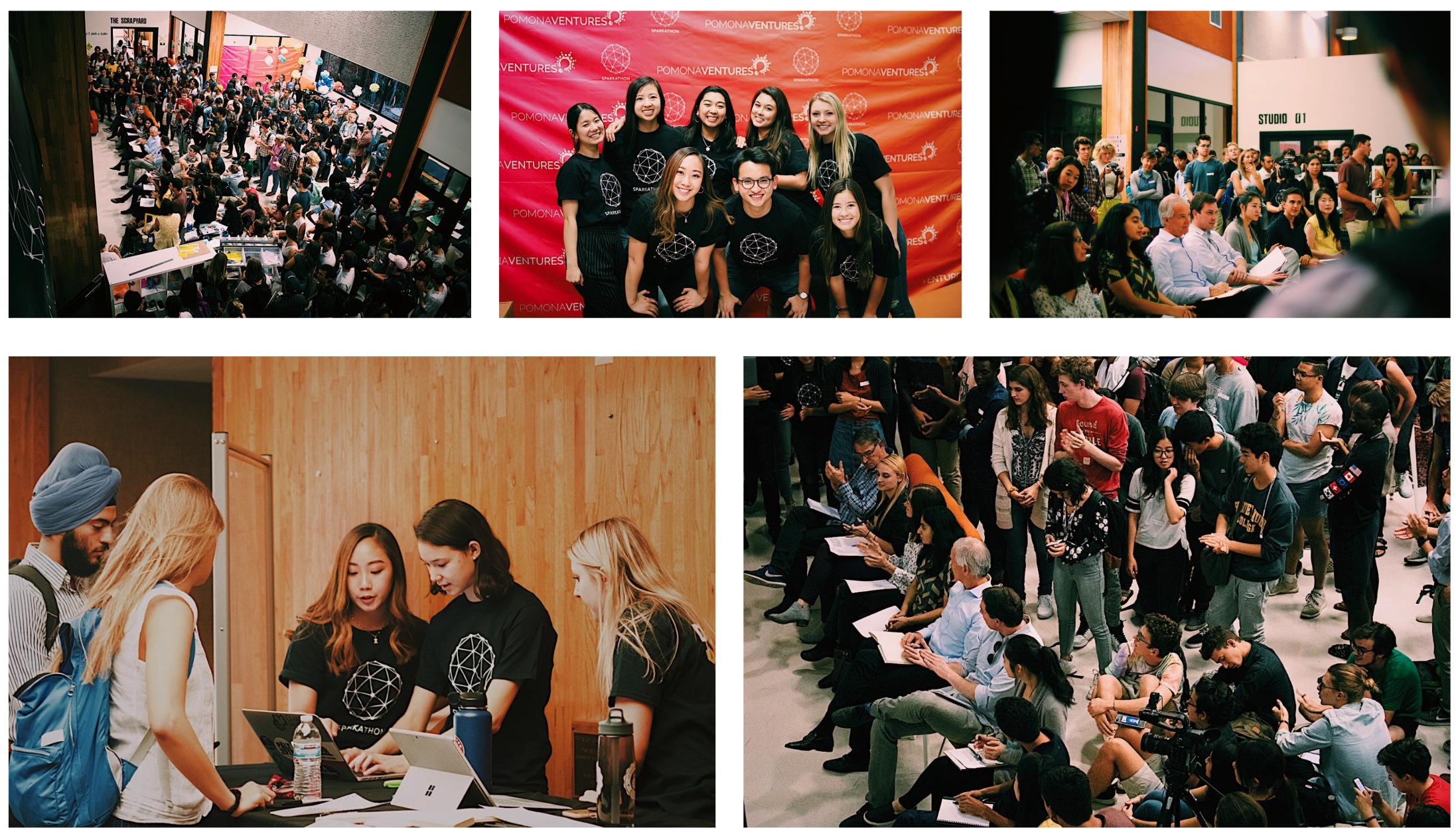 Courtesy of The Hive, Sparkathon Fall 2018
Courtesy of The Hive, Sparkathon Fall 2018
The Hive also hosts Claremont’s biennial Sparkathon Competition! Sparkathon is an impact-driven design thinking competition that challenges students to work collaboratively to solve some of the world’s most pressing societal challenges. Sparkathon brings in students from all over California to embark on this seven-hour challenge. Winners of this challenge receive mentorship, resources, and generous funding, to implement their solutions in the real world!
Rick and Susan Center for Collaborative Creativity (The Hive)
130 E 7th St, Claremont, CA 91711
Click here to learn more about the events, opportunities, and resources offered at the Hive!
…………………………………………………………………………………………………………………………………………
Posted by Kelly Chang ’22 on April 30, 2019
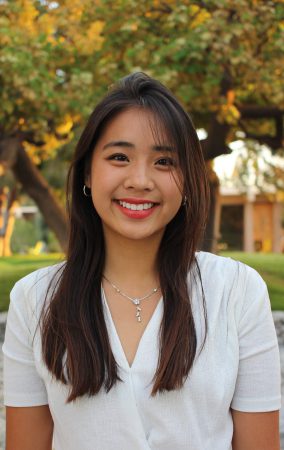 Kelly Chang ’22, Product Design and Communications
Kelly Chang ’22, Product Design and Communications